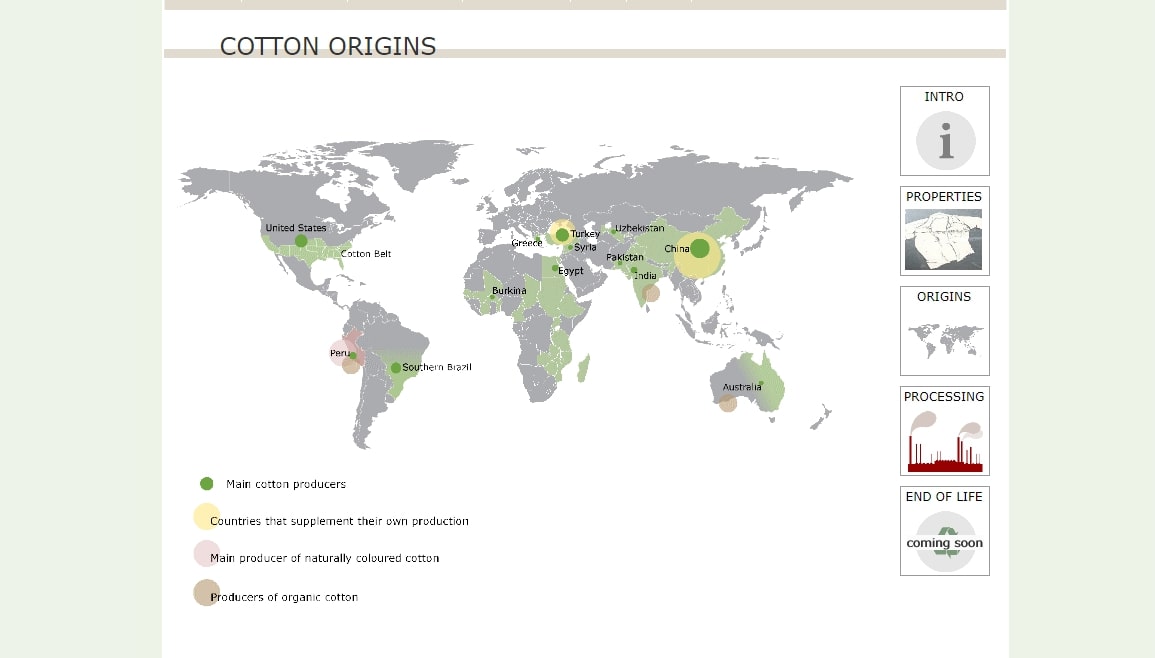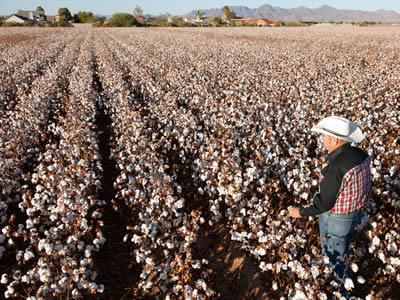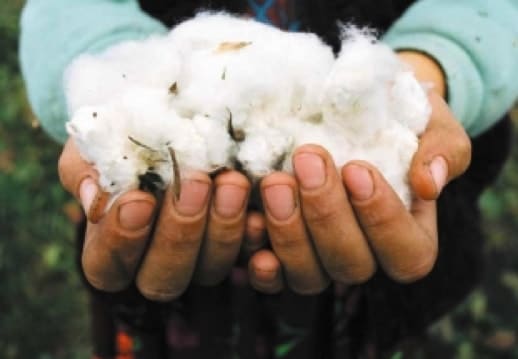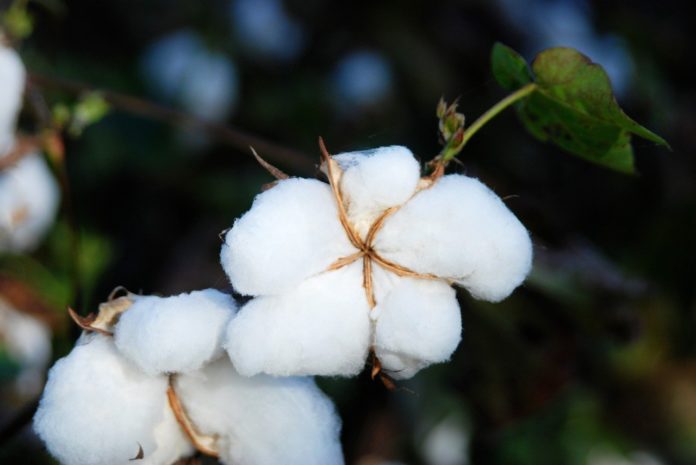Today we are going to tackle some facts about cotton, a material we use so much in our everyday lives. Towels, dish cloths, table cloths, cushions, blankets, curtains, clothes, etc. There are so many uses for it, but there is one question Eco entrepreneurs need to know when they are picking their products:
Is it Eco Friendly?
We are going to go through and observe various facts about cotton in this article. Here’s what you can expect to learn from reading this:
- What cotton is and where it comes from
- A quick history of cotton
- What the uses of cotton are
- Is cotton Eco Friendly?
- Are there Eco Friendly alternatives to cotton?
Now without further adieu, let’s get started!
What is Cotton and Where Does it Come From?
According to Statista, cotton is the most used fiber in the world.
It comes from cultivated cotton plants in the genus Gossypium, the fluffy fibers that we harvest naturally occur around the seeds of the plant. In ideal conditions, a gust of wind will send the fluffy balls flying into the air and disperse the seeds far away.
Cotton appears regularly in various part of our daily lives due to its diversified uses. Every time you dry your face on a soft cotton towel or when you head to bed and slide into our comfortable sheets. We can thank this convenience because of the successful growth and manufacture of cotton.
Our clothing and household items account for a large chunk of cotton use. What I found is that when you search the internet for fun facts about cotton, you quickly learn that it also has other surprising medicinal values that come from producing cottonseed oil.
A Quick History of Cotton
In this section, you will learn various historical facts about cotton that can help you understand how it came to be and its origin.
Cotton is a shrub native to the tropical and the sub-tropical regions in the world including America, Africa, and India. The largest producers of raw cotton are china in first place followed by the United States in second.

It was domesticated independently in the old and new world. Currently, it is being produced in bulk with estimates ranging at about 25 million tonnes or 110 million bales annually. While China may be the leading producer of cotton, the United States has been the sole largest exporters of cotton for many years.
Cotton is measured in bales which measure approximately 0.48 cubic meters, weighing approximately 226.8 kilograms.
Growth and discovery of cotton go way back to around 3600 BC. in Mexico, while evidence of cotton usage was found near Peru that dates as far back as 4500 BC. These were the oldest cotton fibers and boll fragments ever found.
It has been worn in Egypt and India for over 5000 years while recorded growth in the Americas started only the early 1500’s. Later, courtesy of the Englishman Samuel Slater, the first American cotton mill was constructed in the late 1700s.
The mills, which converted cotton fibers into yarn, clothing and cotton balls, can also be referred to as cotton gin machines. However, technology has improved over the past centuries increasing efficiency in growth and production.
This is an example of the Samuel Slater spinning frame displayed at the Smithsonian

What are the Uses of Cotton?
We handle, dress and use cotton in our day-to-day operations. You may be surprised to learn one of the surprising facts about cotton: Did you know it is also actually found in our computers and car tires? It’s almost always part of our daily routines but let’s get specific, what are all of the ways that cotton can be used?
- For our clothes: Your jackets, pants, shirts, socks, underwear are almost always made of cotton, or at least have a percentage of cotton in them.
- For our bedding material: Your bed sheets, pillow covers, and blankets. Can you imagine a world without the comfortable benefits that cotton brings to our night time routine?
- To feed Cattle: Cotton seeds can be fed to cattle, it’s often used in farms as they can bring in 17-26% total protein per seed.
- For Cottonseed Oil: It can be used as cooking oil and is regularly found in foods such as potato chips.
- To create Cellulose Acetate: Believe it or not, cotton can be turned into a type of plastic which is commonly used for candy wrappers and cigarette filters, amongst other uses.
- As Food Thickeners: Now this one is completely new to me, cotton lint, which are the little hairs left on the seed after ginning, is used in foods such as ice cream as a thickener. You can even find cotton lint in toothpaste!
- Coffee Filters: Ah yes, before Keurig came along, we used coffee filters made from cotton fibres.
Despite these interesting uses and cotton facts, we can all agree its largest use can be found in the fabrics market. The question remains though, is the production of cotton environmentally friendly? The real goal of this article is to figure out if cotton is Eco friendly or not. Let’s have a look:
Is the Growth of Cotton Eco Friendly?
These are some cotton farming facts you want to consider when determining its impact on the environment and people.

Pesticides
Cotton is mostly grown in monoculture, this means that no other plants, herbs, and species grow alongside it. The crop is also very pesticide-intensive, and as result, those chemicals end up washed down into the soil. This pollutes our rivers and groundwater. Not looking good…
On top of that, pests, in the long run, have become resistant to the pesticides. It has become quite difficult to counter them. Researchers have concluded that the continuous use of pesticides may in the end result, eliminate their predators. The entire ecosystem ends up taking a beating, we’ve seen this before in crops such as wheat. China, being the number one producer, has been diligently working on a solution to this problem.
An important note: As mentioned here by Organic Cotton. Although cotton is planted in only 2.5% of the world’s agricultural land, it consumes about 16% of all insecticides and 6.8 % of herbicides worldwide.
Irrigation
Where cotton is intensively cultivated, huge amounts of water are necessary for irrigation. This leads to soil salination, since almost all water contains some degree of diluted salts in it. It commonly happens in dry areas and leads to a reduction in soil fertility. As a result, our land and the soils become unsuitable for other crop production.
Due to the large amounts of water used, areas that irrigate cotton have been on the receiving end by diverting most rivers to their farms. This has lead to the drying up of our rivers. On top of that, in places like central and southern Asia, it has been estimated that about 60% of their water is lost before reaching their cotton fields.
Climate Change
Cotton production also contributes to climatic change. Mainly because of industrial fertilizers that are used. Their production require much energy, and release large amounts of carbon dioxide into the atmosphere.
Moreover, the ‘laughing gas’ , nitrous oxide is released as a byproduct due to the continuous application of nitrates in agricultural land. This greenhouse gas, is considered 300 times more destructive than carbon dioxide in terms of global warming.
Economic
The resistances that some pests grow, creates a problem for farmers. As a result, if you’re a farmer, you now have to look into secondary pesticides that only double the problem for you, as more cost has to be incurred. This may lead your small time farm to continuously borrow from banks, thus affecting you socially and economically.
Operation costs become a burden for you as production cost will always increase due to resistance of the pesticides. On top of that, the use of these pesticides in mono-culture cause soil degradation, reducing the nutrients and the water retention capacity. In the end, you will have to increase production inputs even though your yields are continuously declining. This is one of the important facts about cotton not many people would stop and consider.
How Can We Make the Use of Cotton Eco Friendly?
In the past, producers of consumer goods focused on quality rather than quantity. As the world became industrialized the concept of creating in large quantities and fast, became more advantageous, it eventually set the path for multinationals.
Now today the market is trying to find the balance. We do not want to produce goods that will be disposed of quickly after, that only results in yet another crisis of unsustainable consumerism. We are looking into alternative materials or methods of production that can be sustainable.
Making materials that re-usable and recyclable has become important because we want to keep our planet from running out of resources.
There are materials, which are considered environmentally unfriendly and unethical. They are flooding the market because they are not expensive; they end up causing a lot of harm to both the environment and the workforce, as seen when reviewing cotton uses and its true facts about cotton.
The world has started leaning towards the realization that conservation of our environment will be impossible unless we focus on using renewable, sustainable and even recycled fabrics.
Looking into it, these are some environmental friendly materials that can do the same thing as regular cotton:
Organic Cotton
This is grown without the use of chemicals. It thrives naturally thus reducing the risk of pesticide use as well as the effect of soil degradation. It is extremely labor intensive but its resultant factors are worth the labor. Products come in their natural color for example cream, light brown and pale green. It is used in many items such as baby blankets, reusable grocery bags, and towels.
Bamboo
This is a renowned Eco friendly material in the market. It is a fast-growing grass can be harvested after two or three years. Bamboo does not need to be replanted. It ensures the improvement of soil quality and can be grown without any use of fertilizers. More importantly, it does not require the use of pesticides. It helps absorb moisture in the soil thus improving its quality. Bamboo is an excellent alternative to ensure there is the preservation of our environment, given its natural growth and avoidance of chemical usage.
Hemp
The yields from this crop are high and just like bamboo, it is considered as an Eco friendly material. It produces products that are durable and strong, suitable for backpacks and ideal clothing. Its manufacturing is straightforward as there are no chemicals involved or high tech machinery. The crop improves soil quality, however, it has some downside as it is associated with marijuana production hence cannot be grown in some parts of the world.
Recycled materials
These days, fabrics and materials made from recycled items are becoming common and eventually being used to produce all kinds of consumer goods. Examples of products made from used cotton include bags and clothing. By re-using already available fabrics, it ensures that there is minimal waste, hence reducing the urgency for more raw materials. This, in turn, reduces the risk of environmental pollution and energy consumption during production.
Soy
Soybeans have versatile use among them being beverage, food, and oil. The hulls of soybeans can, however, be used to make fabric thus reducing its waste after the food production. The process of turning soy into fabric uses chemicals though in smaller quantities that can be regulated. Its fabric is light and soft making it ideal for the production of underwear.
For further reading please visit One Green Planet for more knowledge on the subject.
Conclusion
With these listed facts about cotton in mind, you can see that regular cotton isn’t quite Eco friendly, but organic cotton is. It’s a fabric that grows without the use of pesticides, herbicides or other chemicals. It is environmentally friendly and health sensitive. Mostly any organic product ensures the protection of the health of our people as it reduces their exposure to chemicals. Health consequences are reduced for instances like in asthma or cancer. Organic qualifications ensure that products help protect our health, the environment and us.
It is upon us to take up the task of avoiding products that are not Eco friendly, whatever the cost. The damage that these pollutants cause to our environment is clear, they make it difficult for other organisms to thrive.
When buying clothes, we should select the ones that are hand or machine washed avoiding those that are chemically characterized. Also, the need for more public awareness forums like this one is also quite clear. We all need to be educated on the need to preserve and use more Eco friendly products.
Thanks for reading.
Now I have a question for you:
When learning these interesting facts about cotton, which one of them was the most surprising and unknown to you?

If you enjoyed this article, you might enjoy these too:
– 8 Uses Of Cork For Your Eco Friendly Business
– Important Facts About Concrete For Green Businesses

